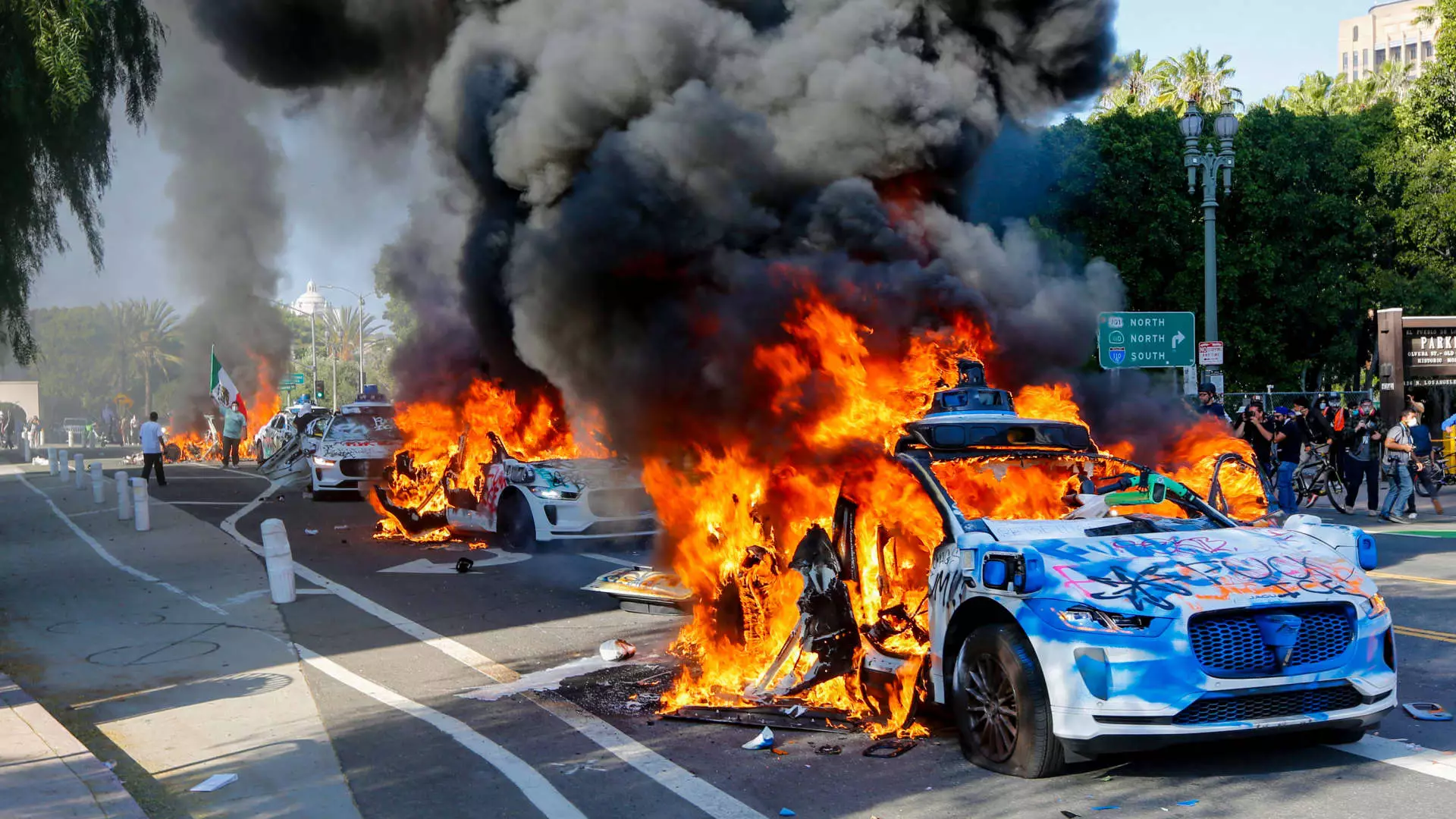In recent years, the fabric of American society has been tested like never before. Protests have become a telling way for the public to voice dissent, especially in the wake of controversial policies related to immigration and human rights. One striking incident in downtown Los Angeles illustrates how quickly peaceful demonstrations can lose their way. Amid protests against President Donald Trump’s immigration policy, several Waymo autonomous vehicles were set ablaze, underscoring the volatile intersection between activism and technology. Destruction of property paints a picture of anger, yet it also complicates the message that protesters intend to convey, raising questions about efficacy and purpose in a politically charged climate.
This isn’t merely a story about vandalism; it raises profound issues relating to the role of technology in our daily lives and how it becomes collateral damage to social uproar. When protesters, who are fundamentally struggling for dignity and justice, turn to acts of violence or property destruction, the message often becomes muddled, risking alienation of potential allies who might otherwise sympathize with their cause.
Symbols of Inequality
Waymo’s vehicles, a striking symbol of cutting-edge technological advancements, ironically also represent a divide often overlooked in these discussions. The images of autonomous cars burning with anti-ICE graffiti serve as a visceral representation of broader societal divides—those with wealth and technological privilege embroiled in the raging fires of systematic oppression. What does it mean when robots and vehicles meant to improve urban mobility are treated as scapegoats for the inadequacies and injustices perpetuated by governmental policies?
The protesters, by targeting these vehicles, might believe they are striking at the heart of an unjust system, yet the broader conversation needs to pivot toward how technology can and should intersect with ethical concerns. While anger and frustration are valid responses, it begs the question: are symbols like Waymo’s taxi fleet truly the villains in a broken system, or do they represent a scapegoat for deeper systemic failings?
Law Enforcement and Militarization
As tensions escalated in LA, the arrival of California National Guard members raises serious concerns about the militarization of a state responding to civic unrest. Governor Gavin Newsom’s announcement about potential legal action against the federal government indicates a significant rift between local authorities and the Trump administration’s approach to handling dissent. From a moderate liberal perspective, Newsom is right to challenge the federal overreach and remind us that local governance should prioritize community safety and civil liberties.
What’s disturbing, however, is how this interaction could further entrench the divide between the government and communities of color who feel increasingly targeted, marginalized, and oppressed. The law enforcement response, marked by heavy-handed tactics, should prompt a reevaluation of how civil society and state power should coexist. Imposing military force in civil matters is not a solution but rather an aggravation of existing tensions, pushing communities to react even more fervently, which results in the cycle of violence that we witness.
Technology as a Double-Edged Sword
In recent times, technology has evolved not just to assist us but to complicate our lives in ways we may not have fully anticipated. Waymo, like many companies at the forefront of innovation, is grappling with the reality that technological advancement comes with unforeseen consequences. These vehicles, while marvels of modern engineering, become a battleground for pressing societal issues like immigration and freedom of expression.
As officials and organizations like Waymo attempt to navigate this charged environment, there lies an opportunity to reassess the place of technology in our daily lives and its relationship to societal structures. It’s crucial that companies and lawmakers work in tandem to ensure that progress doesn’t continue to move at the expense of social justice.
Burning vehicles are more than just symbols of anger; they expose fissures in our society that require profound reflection and action, not just from citizens but from the industries that shape our lives. As we navigate a rapidly changing landscape, it is imperative to ask: how can we harness technology not for division but as a tool for unity and progress?

